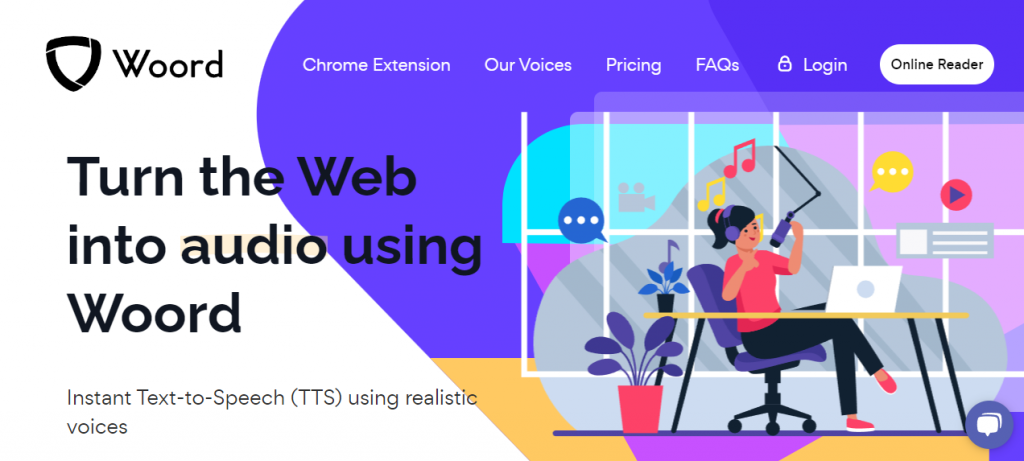If you enjoy reading, it’s likely that you do as well like being read to, which may have developed from being read to as a child. On the other side, it’s possible that you dislike reading because it feels like a chore, you’re dyslexic, you have hearing loss, or you have trouble understanding what you’re reading.
Whatever your motivation, thanks to advancements in text-to-speech technology, you can now easily get text read aloud to you. Our recommendation for the Document to speech API to get text read to you is Woord.
Why Should I Turn Documents Into Speech?
There are several reasons why turning documents into speech can be beneficial. For individuals with visual impairments or reading difficulties, listening to the content of a document can be a more accessible way to absorb information.
Furthermore, turning documents into speech can also improve productivity, as it allows individuals to multitask while consuming the content. For example, one can listen to an article or report while commuting, exercising, or performing other tasks, without having to dedicate time solely to reading.
Moreover, speech technology has advanced significantly in recent years, providing high-quality, natural-sounding voices that make the listening experience more engaging and enjoyable.
Overall, turning documents into speech can provide several benefits, including increased accessibility, improved productivity, and enhanced communication. As a result, it can be a valuable tool for individuals, teams, and organizations looking to improve their efficiency and accessibility in the digital age.
Why Do We Recommend Woord?
Woord is a service that allows developers to convert text into speech.
This enables you to listen to any text you want and create applications that can read aloud any text; such as news articles, product descriptions, or even animated series scripts. The text can be in any format as long as it’s understandable by computers. It can be plain text, XML, JSON, or even programming code.
The API then processes the text and returns a response in a format that can be used by your application. This response may be in the form of an audio file that you can play back; or a string of commands that you can use to control a voice synthesizer.

What Are The Use Cases Of This API?
With Woord, you can bring your applications to life, by adding life-like speech capabilities. For example, in E-learning and education, you can build applications leveraging this API’s Text-to-Speech (TTS) capability to help people with reading disabilities.
Also, you can use it in announcement systems in public transportation and industrial control systems for notifications and emergency announcements. There are a wide range of devices such as set-top boxes, smart watches, tablets, smartphones and IoT devices, which can leverage Woord for providing audio output.
Another application of this API is in telephony solutions to voice Interactive Voice Response systems. Applications such as quiz games, animations, avatars or narration generation are common use-cases for cloud-based TTS solutions like Woord.
How To Use This API
To convert text into audio with Woord, all you have to do is:
1. Open the API and paste in the text or URL you want to convert to audio.
2. Select the language you want the audio to be in and the speed at which you want it to be read.
3. Once you’ve done that, this API will create an audio file that you can listen to.


